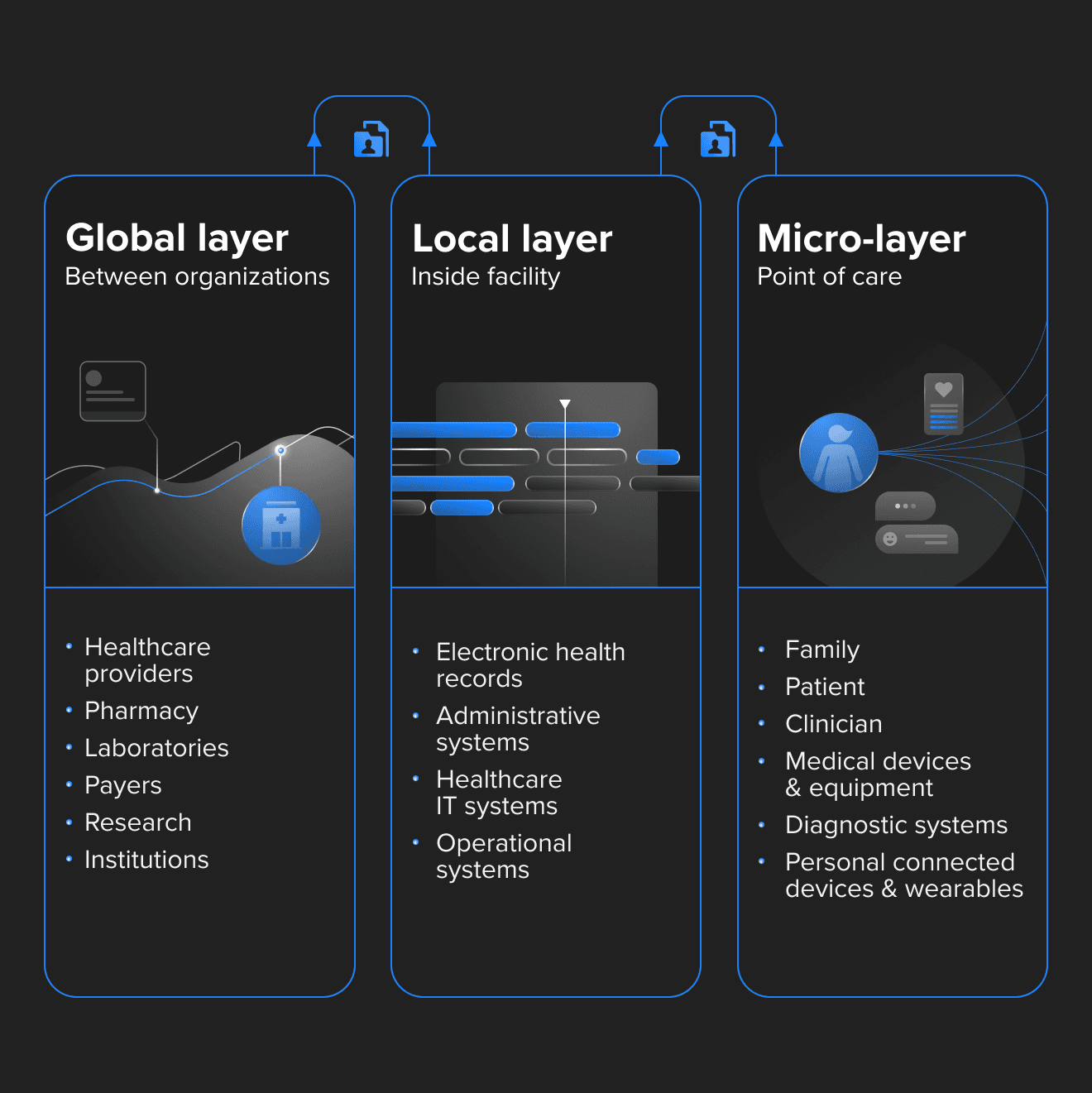Interoperability saves lives, money and time. It is essential for enabling better healthcare that benefits patients, providers, businesses and everyone. While achieving it is a top priority for business and government decision-makers everywhere, creating healthcare interoperability systems is highly complex, involving sensitive patient data, complex systems and the effective integration and exchange of data.
Among healthcare businesses, interoperability has been immensely important for pharmacy benefit managers (PBMs). They administer drug benefits for 270M+ Americans with health insurance, using volume-buying to negotiate discounts from manufacturers. Consequently, the data flow between doctor, patient and pharmacist is critical. Even with PBMs, however, issues remain. Far too often, patients receive a prescription only to find out their insurance won't cover it or to be surprised with a $1200 co-pay.
To give patients and doctors this vital medication information at the point of care, a scale-up PBM connected with us to develop an interoperable enterprise solution for their platform. Already on their way to becoming a HealthTech unicorn, our client is now covering more than 60,000 pharmacies in the US. They've created an ethical framework for drug pricing and an enterprise platform that connects all touchpoints of the pharmacy ecosystem into one platform.
To reach their price transparency goals and enhance patient engagement and workflow efficiency, they needed to integrate with Surescripts. With a small internal team focused on building their core functionalities, they connected with Star to harness our interoperability expertise to navigate the integration journey, provide guidance and move quickly to meet an essential client deadline.
Drug prescription and the importance of interoperable data
Providers, Pharma, payers, PBMs and patients especially are familiar with the challenging workflow surrounding prescription. For example, a doctor may prescribe a certain medication for a patient. However, when the patient goes to fill it out, they might find out they need to be covered or have an unaffordable co-pay. A pharmacist can often find an alternative, but this isn't guaranteed. All of this takes time, puts patient health at risk, and creates stress and friction, especially if another option cannot be found.
A Surescripts integration helps solve this problem. Without integration with it, a provider would have to manually connect with a PBM to validate if a patient is eligible for a drug, what their co-pay would be and alternatives. All of this could take hours that overtaxed HCPs simply don’t have. At the same time, it contributes to a negative patient experience and, in too many cases, can scare people away who may not be able to afford life-saving medication.

Thinking small for big impact
Our PBM client had a small internal team focused on growing their proprietary technologies and expanding their market footprint. However, they didn't have the resources for their Surescripts integration milestone. Developing them internally would be expensive and time-consuming, with no guarantee they would meet critical client deadlines. It's more than time on the line. Whatever you build must work with the core product and provide first-rate quality essential for dealing with critical health data.
That's where we came in. We thought about the different ways to approach this challenge. First, we considered building an integration engine. While this seemed like the neutral solution, creating it from scratch also meant more testing, deployment, and higher costs due to more servers and time. We also considered using an off-the-shelf engine such as Mirth or Iguana to manage the transactions. However, we found this approach to be excessive and added unnecessary operational costs.
Instead, we worked closely with the client to consider a better software architecture for our interoperability platform. We learned about their products and decided together a more fitting integration solution would be to tap into their reporting engine when creating transactions. We worked closely with them to minimize the impact on the code and the size of the project by reusing the reporting engine to deliver the same quality.
With each step, we helped guide them on what input we needed from their side, explained requirements and came together to drive the project quickly and effectively.
Crafting our integration solution
We architected a simple service that would allow our client to initially integrate SureScript services and later manage multiple service providers that support X12/270 & 271 via a single engine, and maintain the API calls required to integrate with numerous providers in a single platform with limited modification to their existing system.
In addition, we analyzed the X12 270/271 API specification of Surescripts and created the data mapping specification to provide accurate information to Surescripts and our client. From here, we verified the integration and interfaces using the Surescripts test data and scenarios and finally completed the Surescripts certification.
As a result, our client could go live with a Surescripts-certified integration, allowing their clients, members, and healthcare providers to access accurate information and ensure members' prescriptions were correct and covered by the member's benefits while minimizing the effect on their core product and their team.

A triple win for our clients, patients and providers
Projects like these are critical for creating medical device interoperability and better healthcare.
Our client saw the following benefits of interoperability:
- An essential step in their early journey on their way to achieving a 100M+ Series C funding round.
- Vital milestone for reaching their first million US patients.
- Client coverage now extends to 60,000 pharmacies in the US
- If they tried to do the integration themselves, it could have taken twice as long because they didn't have the internal competencies even to begin mapping the data.
- As a PBM, they can deliver exceptional services to their clients and patients.
- Because we guided them through the process, their internal team could focus on core development.
- The risk of mistakes, inefficiencies, or bottlenecks anywhere in the message structure, architecture or handling could be especially threatening for a startup. This could take even more time to fix or result in an efficient solution that costs more in the long term.
- We helped enhance sales and management by creating electronic transaction reconciliations instead of slower manual ones.
While we are proud of how our work has benefited our clients, the biggest benefit is for members and HCPs. With our integration solution:
- Patients know immediately if they are covered for medication, what their co-pay is, or even if they need an alternative before leaving the clinician's office.
- The time between when a patient receives a prescription from a doctor and when they can start taking it is reduced while eliminating price mysteries.
- Integrating with Surescripts saves clinicians and pharmacists time as the clinician can know at the point of care what will be covered.
- Our solution reduces patient stress and friction while accessing care, allowing them to focus on condition management and recovery.
Healthcare data interoperability delivers transformative health and business outcomes. Deliver on its potential and help enable a more accessible, equitable and better healthcare future for everyone.








